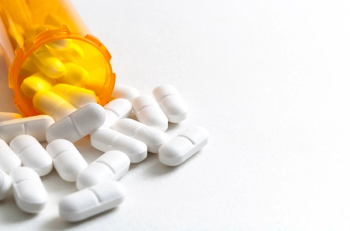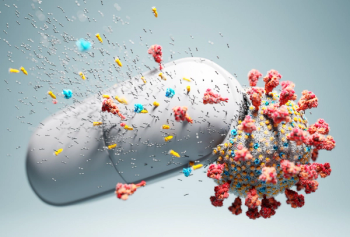
Statins not all the same--and other heart drug findings
Highlights of the American Heart Association meeting
Rx CARE
Statins not all the sameand other heart drug findings
The first head-to-head trial comparing two different statinshigh-dose atorvastatin (Lipitor, Pfizer) at 80 mg/day with moderate-dose pravastatin (Pravachol, Bristol-Myers Squibb) at 40 mg/day)shows that the high-dose treatment can make atherosclerotic plaques (atheroma) shrink and stabilize. Whether further trials will compare these two drugs with the other three statins now on the market, and at different doses, to tease out further differences, is not yet known.
Another question is whether Medicare, as being redone by Congress, or private insurance companies will pay the higher costs associated with high-dose therapy.
Steven Nissen, M.D., medical director of the Cleveland Clinic Cardiovascular Coordinating Center and principal investigator of the Reversal of Atherosclerosis with Aggressive Lipid Lowering (REVERSAL) trial, said pravastatin was chosen as a comparative agent for this trial because it is one of the best-studied statins and has been shown to result in improved morbidity and mortality. He added that this trial was unusual in that it used intravascular ultrasound, not just serum lipid parameters, to see what was happening to patients.
Between June 1999 and September 2001, 2,163 patients aged 35 to 78 years consented to be randomized; of these, 654 were randomized and 502 completed the protocol. Nissen told a late-breaking trials session of the annual American Heart Association meeting in Orlando, Fla., that the primary efficacy sought was the percent change in volume of the atheromas in these patients. On that basis, over the 18-month period of the study, atheroma volume progressed in the low-dose pravastatin cohort by 2.7%, compared with baseline, while it was essentially unchanged in the high-dose atorvastatin arm. Other results included reduction in mean baseline LDL-C to 110 mg/dL in the moderate lipid- lowering group, versus 79 mg/dL in the intensively treated group. Also, C-reactive protein decreased 5.2% with moderate-dose pravastatin, versus 36.4% with high-dose atorvastatin.
The study conclusion, according to Nissen, was that in patients with LDL levels ranging from 125 mg/dL to 210 mg/dL, "intensive treatment with 80-mg atorvastatin halted progression of atherosclerosis, whereas a more moderate regimen with 40 mg pravastatin was associated with progression."
While this statin trial may have stolen the spotlight at the AHA meeting, these drug trials were also of interest:
Treating elderly patients at risk of stroke with the angiotensin receptor blocker candesartan cilexetil (Atacand, AstraZeneca) reduced the risk of stroke by 42%, according to a subanalysis of the results of The Study On Cognition and Prognosis in the Elderly (SCOPE) trial, lead investigator Vasilios Papademetriou, M.D., of Georgetown University reported.
Quick action with administration of the clot-buster tenecteplase (TNKase, Genentech), at the scene of a cardiac arrest in which patients do not initially respond to advanced life support measures, can rescue some who would otherwise be lost, according to William Bozeman, M.D., of the University of Florida in Jacksonville. Bozeman reported on 30 such patients. In this group, 30% had the return of spontaneous circulation, 17% survived and were admitted to intensive care, and 7% survived and discharged from the hospital. Bozeman said, "Prospective controlled trials are indicated to evaluate this promising new therapy."
Pharmacists in a managed cardiovascular risk reduction program can help to ensure that all patients are treated according to clinical guidelines, as well as help to reduce the amount of recidivism for patients who are lost to follow-up and may not be following the guidelines recommended for their treatment. So said Kari Olson, BSc (Pharm), Pharm.D., of Kaiser Permanente in Lakewood, Colo.
Olson said the pharmacy specialists, along with a patient-tracking system, are used to guide patients, which allows patients to reach treatment goals. With this plan, 72.8% of 8,000 patients followed for about 2.5 years achieved low-density lipoprotein (LDL) levels below 100 mg/dL.
Most of the patients were on statin therapy, while 7.8% were on combination therapy and 12.7% were on no therapy. Olson said that R.Ph. follow-up, along with a patient-tracking system, can achieve results such as those outlined in programs like the American Heart Association's "Get With the Guidelines."
A closer look at the Losartan Intervention for Endpoint Reduction in Hypertension (LIFE) trial shows not only that losartan (Cozaar, Merck) reduces stroke risk in general, but losartan therapy "is associated with consistent reductions in risk across various stroke types, with fewer neurologic deficits." The new analysis was based on following 9,193 hypertensives with left ventricular hypertrophy for 4.8 years randomized to receive losartan or atenolol. Jorge Kizer, M.D., Weill Medical College of Cornell University, found the greatest benefit lay in patient subgroups that had atrial fibrillation, isolated systolic hypertension, or prior stroke.
Preventing venous thromboembolism, and stroke is where the experimental drug ximelagatran (Exanta, AstraZeneca) comes in. Jonathan Halperin, M.D., Mount Sinai School of Medicine, New York, said it appeared to work about as well as the standard drug warfarin in preventing clot formation in a study of 7,320 patients.
The angiotensin II receptor blocker valsartan (Diovan, Novartis) was shown in the Valsartan in Acute Myocardial Infarction (VALIANT) trial to be efficacious in preventing recurrent myocardial infarctions. It was reported to be at least as effective as the ACE inhibitor captopril (generic) in preventing second heart attacks in high-risk patients.
Marc Pfeffer, M.D., Ph.D., Harvard Medical School, and senior physician at Brigham & Women's Hospital, Boston, said VALIANT, as a major international study, "will change treatment guidelines." Results of this longest-term study in post-heart attack patients were also reported on-line by the New England Journal of Medicine.
Jean McCann
Based in Ohio, the author has extensive experience covering national and international medical and pharmaceutical meetings and is a clinical contributor to Drug Topics.
Jean McCann. Statins not all the same--and other heart drug findings.
Drug Topics
Dec. 8, 2003;147:32.
Newsletter
Pharmacy practice is always changing. Stay ahead of the curve with the Drug Topics newsletter and get the latest drug information, industry trends, and patient care tips.




